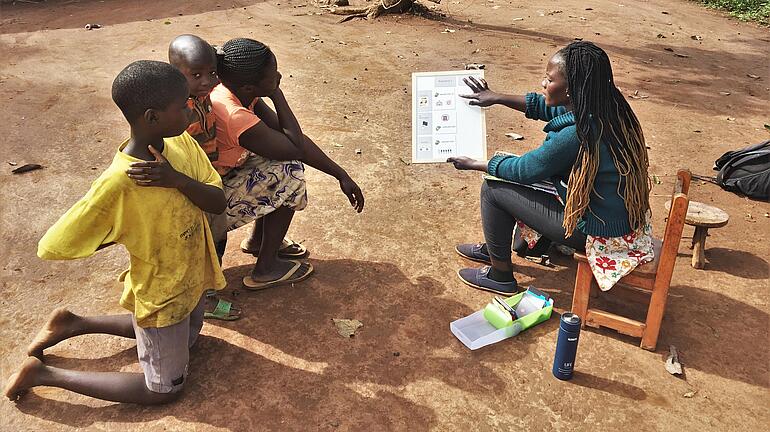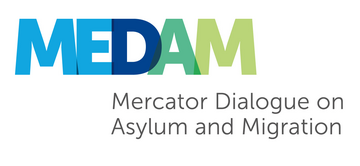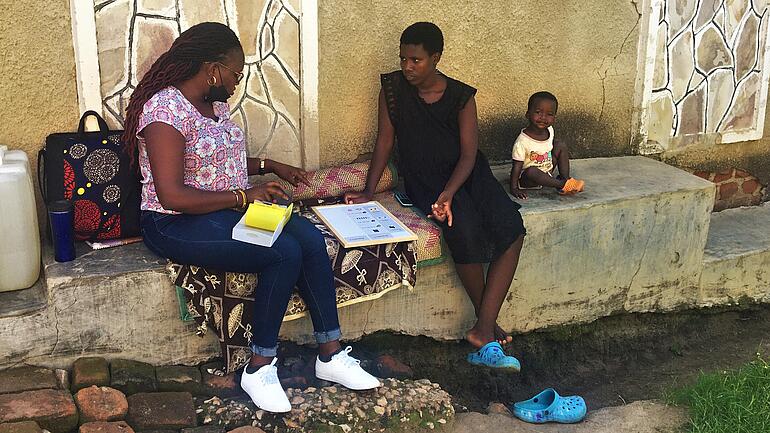Kiel Institute Highlights
How are migration decisions made? Drivers in countries of origin
For a better understanding of what drives migration, direct household surveys in countries of origin are a useful tool. Results may help to unravel the interaction of individual household, origincountry, and destinationcountry characteristics. Unfortunately, the COVID-19 pandemic has disrupted this type of research efforts worldwide. Following the ease of most travel restrictions, MEDAM researchers have finally been able to go back into the field and conduct direct household surveys in Uganda and Senegal on migration aspirations and attitudes towards immigrants, using new COVID-19 compatible survey methods.

To migrate or not to migrate—a question faced by many young people in sub-Saharan Africa. If Eddy, University student from Mbale, Uganda, had the opportunity, he would go to the U.S. without thinking twice: “Here in Uganda, it is difficult to find a job, even when you have a Master’s degree.” And the risks often associated with migration through the back-door? “I am a lucky guy, I would be alright.” His classmate Rose disagrees. She thinks that the economy is growing and wants to build a future in Uganda.
Understanding migration aspirations
Over the next several decades, growing populations and demographic change, as well as environmental degradation in many poor countries, especially in Africa, will lead to more people contemplating emigration to Europe. The study on migration aspirations and attitudes towards immigrants in sub-Saharan Africa, conducted within the framework of the Mercator Dialogue on Asylum and Migration (MEDAM) and financed by the Stiftung Mercator, is all about migration.

How do people decide whether to migrate or not? Which factors are particularly important for their decision—the economic situation in their home country, the opportunities in their destination country, or the conditions of the journey? What is the role of gender and climate change in migration aspirations? And what do people think about immigrants that come to live in sub-Saharan Africa?
To answer these and more questions, MEDAM researchers collect original survey data in Uganda and Senegal—two countries that between them experience all types of migration found in Africa (regular vs. irregular; labor vs. forced migration; immigration from the region vs. emigration outside Africa). Together with our local partners, the Policy Analysis and Development Research Institute (PADRI) and Centre de Recherche pour le Développement Économique et Social (CRDES), we interviewed roughly 2,700 young respondents and asked about their migration aspirations and backgrounds, political perceptions, gender roles, climate change, and attitudes towards immigrants. Key insights we hope to gain from two innovative conjoint experiments. These are choice experiments where respondents have to compare two options that differ from each other with respect to multiple dimensions, and chose the one they prefer.
Experimental options: emigration scenarios and immigrant profiles to choose from
In the conjoint experiment on migration aspirations, respondents were asked to choose between hypothetical migration scenarios, which consist each of three dimensions: the (hypothetical) status quo in origin country, the expected situation in the destination country, and the circumstances of the journey. Respondents compared scenarios against each other and select the one in which they would be most willing to migrate. In the second conjoint experiment on attitudes towards immigrants, respondents choose between different immigrant profiles, differing with respect to the migrant’s origin, job, willingness to integrate, and location in the destination country, the one which they would personally prefer to come to their home country.
Randomly varying the specific characteristics of the different scenarios/profiles allows researchers to observe how migration aspirations and attitudes towards immigrants are affected when specific features change. How important is the legal status in the destination country for the decision to migrate? How does the risk during the journey affect migration aspirations? Do people in sub-Saharan Africa prefer fellow African or Chinese immigrants? Or do they place higher importance on the immigrant’s economic contributions?

Continuing research under COVID-19 conditions
A fundamental challenge during the interviews was that some of the participants were unable to read. Conducting the experiments was further complicated by the safety distance required in times of pandemic. It was not possible for respondents and interviewers to work together on one tablet.
Together with our local partners, our researchers developed intuitively understandable visualizations for the different dimensions of the conjoint experiments, which were then printed on magnets. These magnets can be plugged on whiteboards and handed over the respondent, showing him or her the different scenarios/profiles without violating hygiene standards and reducing complexity at the same time.
The data collecting in Uganda is already completed, with very positive results in different ways: first, respondents enjoyed the interactive and even playful way of answering to the interviewers’ questions making use of magnets and whiteboards. Next, despite the complexity of the task and a substantial share of respondents with little education, the collected data is of high quality. The analysis of the consistent patterns already apparent in the responses is still ongoing and we expect to publish the research results as part of the MEDAM project over the course of 2022. Last but not least, the survey using the new technique was also a good exercise for the interview team, which will be useful to them in their future work.
Building on and adding to an existing body of MEDAM research on attitudes and policy preferences in Europe and countries of origin, first asylum, and transit, this new evidence will help to better understand migrants’ decision-making and the role and interdependence of different push factors. Ultimately, our research aims to inform European policymakers to develop more effective, cooperative policy-making on migration between European and African countries.
Stiftung Mercator is a private and independent foundation. Through its work it strives for a society characterized by openness to the world, solidarity, and equal opportunities. In this context it concentrates on strengthening Europe; increasing the educational success of disadvantaged children and young people, especially those of migrant origin; driving forward climate change mitigation and promoting science and the humanities. Stiftung Mercator symbolizes the connection between academic expertise and practical project experience. One of Germany’s leading foundations, it is active both nationally and internationally. Stiftung Mercator feels a strong sense of loyalty to the Ruhr region, the home of the founding family and the foundation’s headquarters.